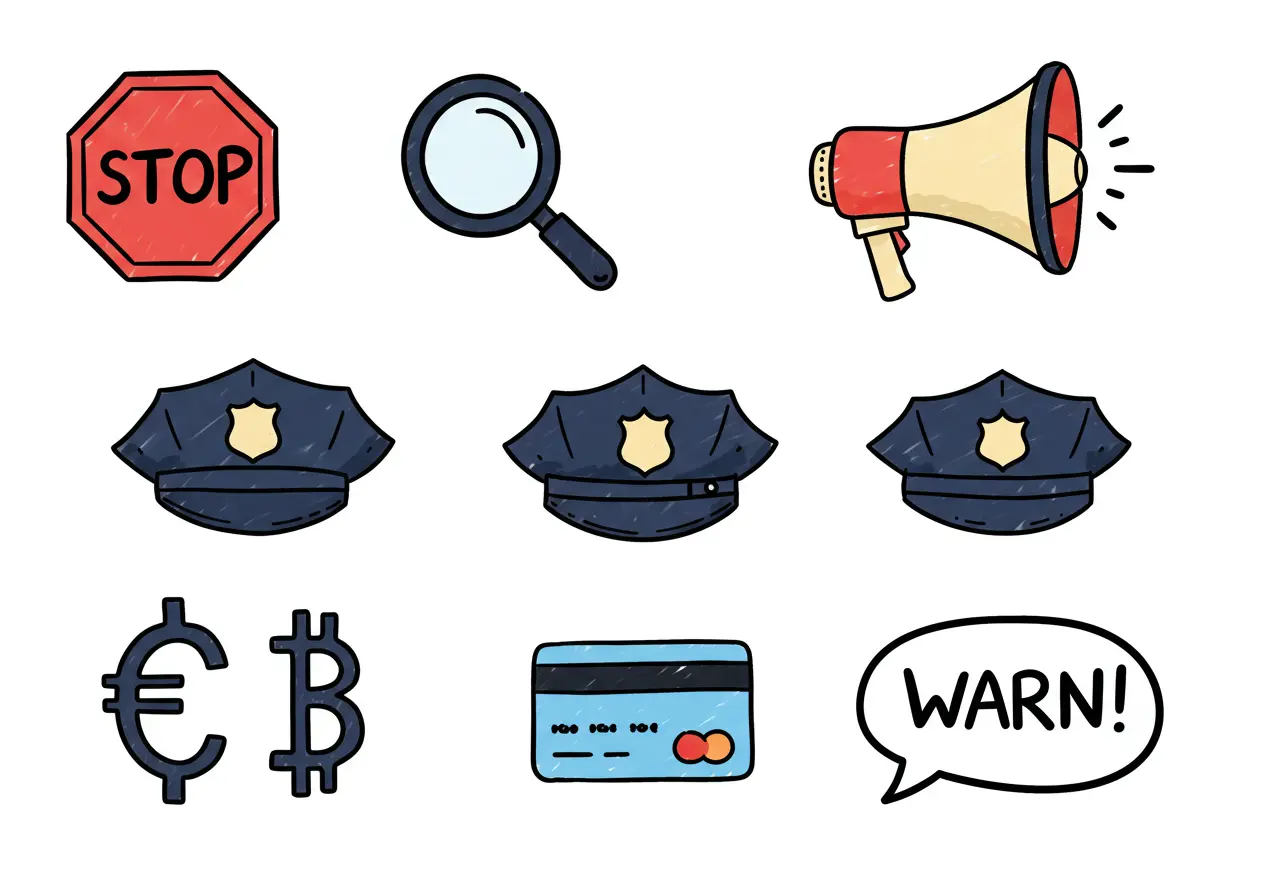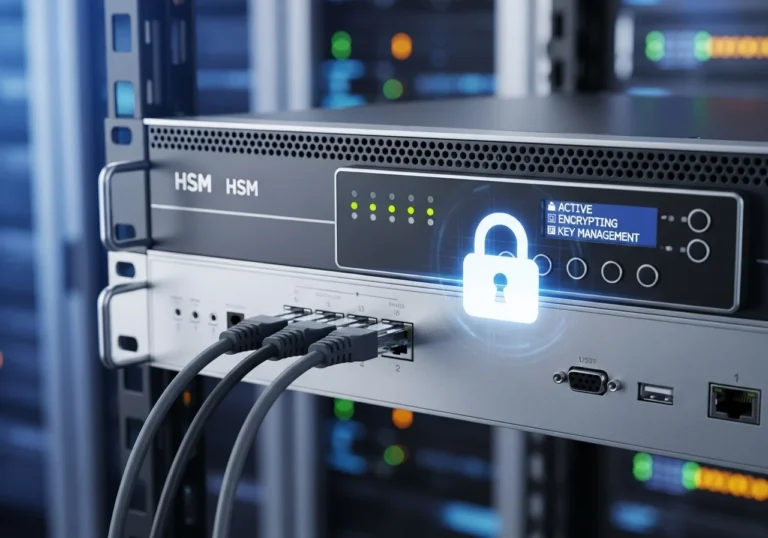How to Report a Crypto Scam: 7 Steps to Protect Yourself
Maybe you trusted a “guaranteed” crypto opportunity that vanished.
Or a convincing “support rep” called about a wallet issue—only to be the one who drained it. Maybe it was a pyramid scheme cleverly disguised as a cutting-edge investment.
Crypto scams don’t just target the careless—they hit smart, cautious people every single day. These scammers aren’t amateurs. They’re calculated, trained manipulators who make a career out of deception.
But listen, friend: Reporting crypto scams matters. It’s not just about your money (though wouldn’t that be nice?). It’s about pulling the fire alarm. Warning others. Making it harder for these jerks to do it again. Let’s walk through what to do, one thing at a time. Just steps.

Why Even Bother Reporting?
- It flags the wolves: Telling authorities helps them connect the dots. Your report + others = a pattern. Patterns get investigated.
- It shuts things down: Your report might be the one that gets a scam website yanked offline or freezes a bank account the thieves use.
- It protects your neighbor: Sharing scammer details helps build warning lists. Someone else might check before sending their rent money.
- It creates a paper trail: If, somehow, money gets recovered later (like in a big bust), your report is your claim ticket. Slim chance? Maybe. But better than zero.
Think of it like cleaning up litter on your street. You pick up one piece. Someone else picks up another. Slowly, the street gets cleaner for everyone.
Step 1: STOP. RIGHT NOW. Protect What’s Left
Don’t freeze up. Act fast. Like putting pressure on a cut.
- Disconnect IMMEDIATELY: Did you download something weird? Let someone “help” you by taking over your computer? Unplug your internet. Turn off Wi-Fi. Right now. Cut them off.
- Call Your Bank & Card Companies: Pick up the phone. Say: “I’ve been scammed. Please freeze my cards.” Why? Because often, credit card cloning scams come next. They try to clean out your bank account too.
- CHANGE. YOUR. PASSWORDS. Everywhere. Email. Exchanges. Social media. Make them strong and different. “Fluffy123” is useless. Try “PurpleRainBoots$Jumped7Puddles!” (See? Stronger.)
- Turn ON 2FA Everywhere: Use an app like Google Authenticator or Authy. Never use text messages for codes. Texts can be stolen.
👉 Seriously, breathe. Get a glass of water. Then do these steps. Speed helps, but don’t panic.
Step 2: Play Detective (Gather EVERYTHING)
Before you forget, collect your clues. Like gathering pieces of a puzzle.
- Find the Transaction ID(s): Look in your crypto wallet history. See that long string of gibberish letters and numbers next to the bad send? That’s the ID. Copy it exactly.
- Get the Scammer’s Wallet Address: This is SUPER important. It’s where your money went. Copy it perfectly.
- SCREENSHOT EVERYTHING: The fake website. The chat log. The scammer’s profile pic. That scary email (email phishing scams look so real!). The ad you clicked. Write down dates and times too – when you talked, when you sent the crypto, when you realized “Oh no.”
- Save Contact Info: Phone numbers, emails, social media profiles, website links – anything the scammer used.
Stick all this in a folder on your computer. Name it “SCAM EVIDENCE – [Today]”. You’ll need it soon.
Step 3: Tell the Place Where It Started

Go back to where the scammer found you. Sound the alarm there.
- Social Media (FB, Insta, TikTok, X): Find the profile, group, or ad that tricked you. Hit “Report.” Choose “Scam” or “Fraudulent.”
- Messaging Apps (WhatsApp, Telegram): Report the contact or group right inside the app.
- Fake Website or App? Try reporting the website address (URL) to the company hosting it (tricky, but try). If you downloaded a fake app, report it to the Google Play Store or Apple App Store.
- Forum or Weird Site? Tell the website’s moderators.
Why do this? Because it might get that fake profile or online investment scams page taken down fast. Might save the next person. Especially helps with those sneaky fake technical support service scams.
Step 4: Report to the Actual Authorities (Yeah, the Police)
This feels big, I know. But it’s important. Start local.
- Your Local Police: Go down to the station or check their website. Lots have online forms now. Just say: “I was scammed out of cryptocurrency.” Bring your evidence folder (or tell them you have it). GET A COPY OF THE POLICE REPORT NUMBER! You’ll need this.
- National Fraud/Cybercrime Folks: These guys eat cryptocurrency scams for breakfast:
- USA: FBI’s IC3 (Internet Crime Complaint Center)
- UK: Action Fraud
- Canada: Canadian Anti-Fraud Centre (CAFC)
- Australia: ReportCyber
- Not in these? Google “[Your Country] report cybercrime” or “[Your Country] report fraud.”
Tell them what KIND of scam it was: Fake exchange? Romance scam? Pyramid scheme? Multi-level marketing scam with crypto promises? Be specific.
Step 5: Tell the Crypto Crime Busters
Awesome groups exist just to track crypto scams.
- Chainabuse: Free. Easy. Report the scammer’s wallet address and your story. You can also check any address here first next time!
- CryptoScamDB: Another good spot to report scam websites and addresses.
- Your Exchange (If you used one): Did you send the crypto from Coinbase, Binance, Kraken, etc.? Contact their support ASAP. Give them the transaction details and scammer address. Can they get it back? Probably not. But they might track it or block the thief.
🔍 Next time? Before sending crypto anywhere, paste the wallet address into Chainabuse. See if it’s flagged. Lifesaver.
Step 6: Call Your Bank/Card Company (Again)
This step depends on how the money flowed.
- Used your credit/debit card to buy crypto FOR the scam? Or paid a “fee” directly with your card? Call your bank/card issuer now. Say: “This charge was fraudulent. It was part of a scam.” Ask about a chargeback – this is where they might reverse the charge if you paid for something you never got (super common in fake technical support service scams).
- Sent crypto from YOUR OWN wallet (like MetaMask)? Banks usually can’t help here. It’s like mailing cash. But, if you transferred money from your bank to an exchange first as part of the scam, tell your bank about that transfer.
Have your evidence ready: Give them your police report number and screenshots.
Step 7: Warn Others (Only If You’re Up For It)
This is the tough one. It takes courage. It’s okay if you can’t. But if you can? It’s powerful.
- Post Anonymously: On Reddit (r/Scams, r/CryptoCurrency). Describe how it happened. “Heads up: Fake Coinbase support numbers showing up in Google Ads!”
- Tell Your Circle: Especially if it was a pyramid scheme or multi-level marketing scam – these prey on friends and family. A quick “Hey, I got burned by this, watch out” can save someone else.
- Share the Bad Details: If you feel okay doing it, post the scammer’s wallet address, phone number, or website link. Help others avoid it.
Feels better than you’d think: Knowing you might have saved your aunt or your coworker from losing their cash? That’s a win.
What Happens Now? The Real Deal.
Let’s be totally honest. Getting your crypto back? It’s like finding a needle in a haystack… in the dark. Blockchains are built so transactions stick. Authorities are slow. It sucks. Big time.
BUT… by reporting, you did something HUGE:
- You made life harder for the scammer.
- You created that official record (just in case!).
- You helped protect other people. Your report might be the one that breaks a big case open.
💔 Feeling stupid or ashamed? Please stop. Seriously. These scammers fool CEOs, doctors, tech geniuses. They’re that good. Reporting takes guts. You’re doing great.
Overwhelmed? Just Do These 3 Things:
- Lock it down. (Step 1: Passwords, 2FA, bank freeze).
- Grab ONE piece of proof. (Step 2: Screenshot the scammer’s address or the transaction ID).
- Report to ONE place. (Step 4: National fraud center OR Step 5: Chainabuse).
Done. You’ve already taken massive steps. Be proud of that.
You’re More Than a Victim
Remember my $800 mistake? I reported it everywhere. Months later, I saw news about a bust on fake wallet login scams. My tiny report was part of that. Didn’t get my money back. But knowing I helped stop them? Felt like a small victory.
Scams win when we stay quiet. Reporting is how we fight back. It’s messy. It’s frustrating. It doesn’t fix everything.
But it fixes something.
You got scammed. It hurts. It’s unfair. But by taking these steps? You stopped being just a target. You became someone who fought back. And that? That’s something to hold onto.
The 7 Steps Again (Quick Cheat Sheet)
- STOP & LOCK: Disconnect, freeze accounts, change passwords, turn on 2FA.
- GRAB YOUR PROOF: Transaction IDs, scammer address, screenshots, dates.
- REPORT WHERE IT HAPPENED: Social media, apps, websites.
- TELL THE AUTHORITIES: Local police and national fraud/cybercrime center.
- ALERT CRYPTO WATCHERS: Chainabuse, CryptoScamDB, your exchange.
- CALL YOUR BANK: Report fraud, ask about chargebacks (if you paid by card).
- WARN OTHERS (IF YOU CAN): Share details anonymously or with friends.
Table of Contents

Hello, I’m Edmilson Dias, founder of CoinBringer. I created this platform to guide people through the fast-moving world of cryptocurrency with clarity and safety. With years of research in blockchain and digital security, my goal is to translate complex topics into practical knowledge, offering reliable tutorials, safety insights, and guidance for both newcomers and experienced users.
Discover more from CoinBringer
Subscribe to get the latest posts sent to your email.







